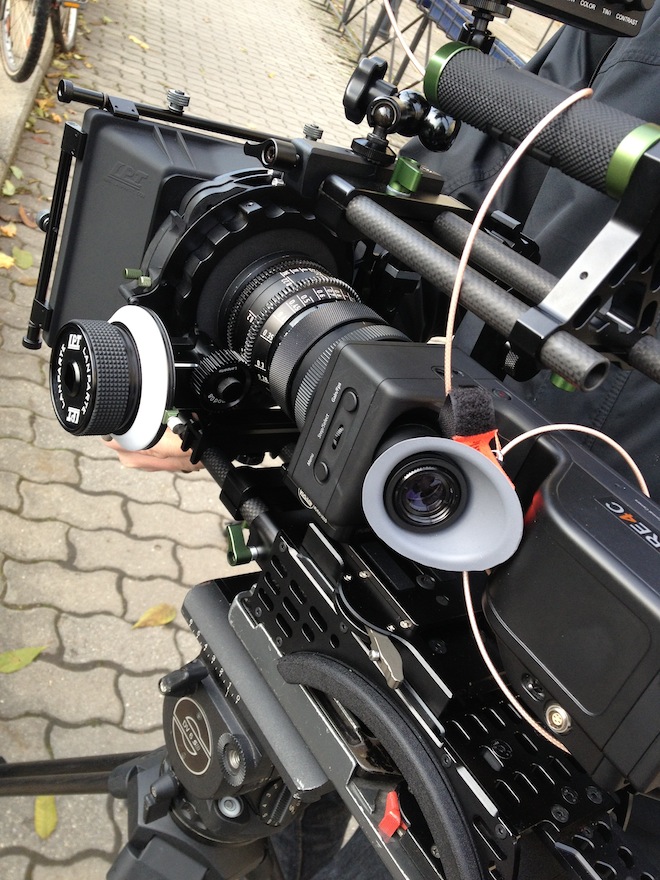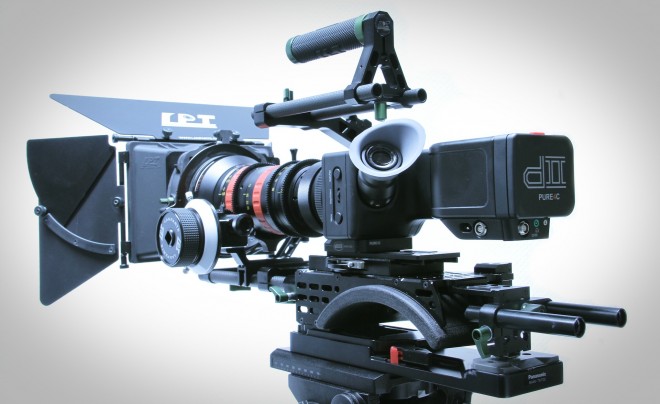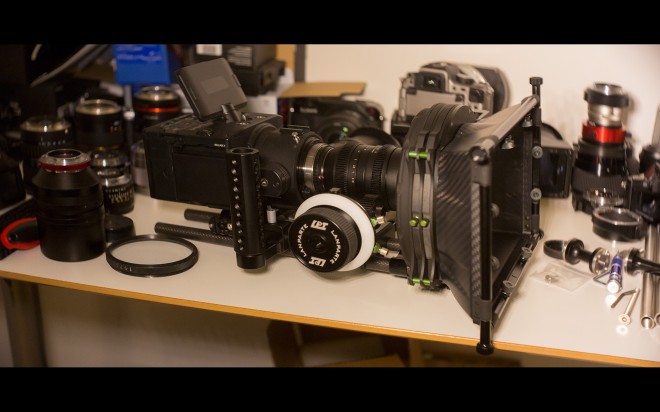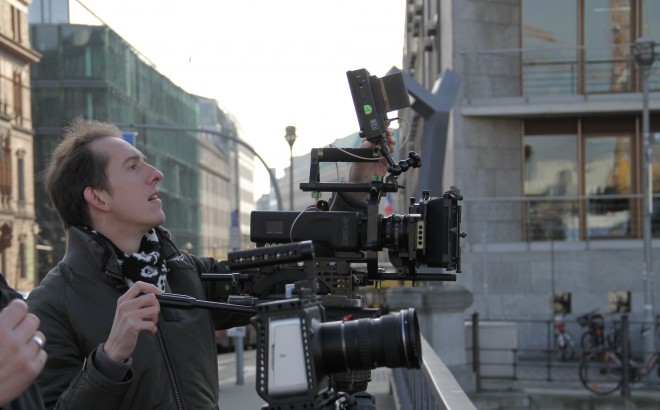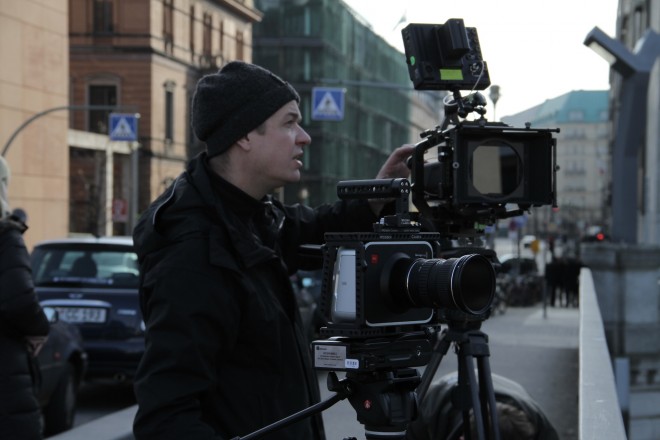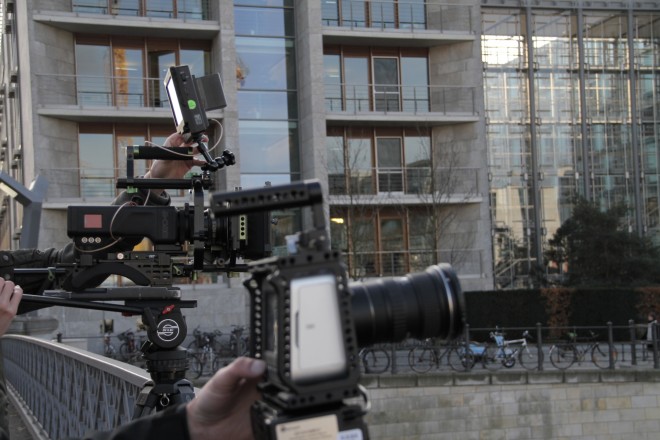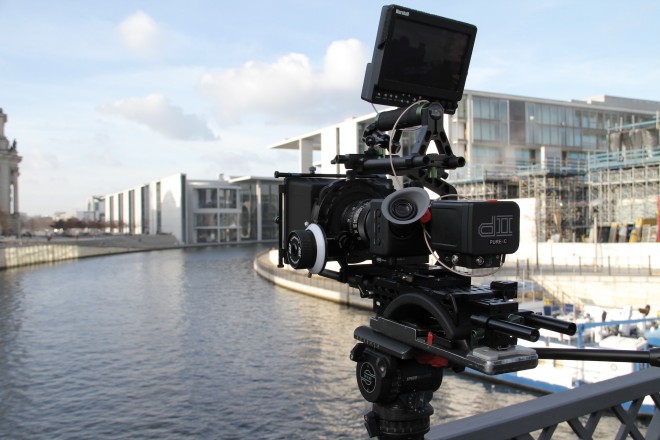Read more in the first part of this article
Back in November I tested the Ikonoskop A-cam dll with Rob of Slashcam.de and Ludwig Reuter of HD Video Shop here in Berlin.
We spent a few hours comparing it to the Blackmagic Cinema Camera – here’s how it turned out.
This was a ‘quick and dirty’ test on the most part as we only had a short run-time on the Ikonoskop (1-2 hours).
The sample footage was put together in DaVinci Resolve but first I had to fix a heavy magenta cast to the blacks on the Ikonoskop footage. I’ve heard various explanations for it. One theory is that it was Resolve itself with version 9 that introduced the problem. A custom LUT is a workaround and that’s what I used to solve it. Here’s the LUT and some instructions.
However with an ND9 filter (which we used on the test) this introduces infrared contamination. This is the other theory – but to what extent the problem is Resolve and to what extent the ND I really am not sure. The end result was like tip toeing on a rope between shadows either too green or too magenta. I feel certainly there’s some kind of issue with Resolve and Ikonoskop footage.
This was a shame because the Ikonoskop actually delivers extremely good colour and a cinematic image and maybe I am not seeing the best from it.
The 12bit raw Cinema DNG for some reason did not utilise the full 1080p frame in Resolve – as you can see in the sample shots it has a black border. I really have no idea what is going on there!
I feel the Blackmagic Cinema Camera is easier to just get on and shoot with without any special tricks and easier to handle in post – at least in my limited experience of the Ikonoskop. Certainly out the box the BMCC is more ready. But maybe the Ikonoskop – to my eye at least – looks more cinematic? You can judge the test footage and draw your own conclusions!
The Blackmagic has the advantage of 2.5K resolution, a much larger sensor than 16mm and lower price point. The Ikonoskop has the advantage of a CCD sensor – so global shutter with no skew, less moire and a form factor better suited for shoulder mounting.
The internal viewfinder, though rather small, it’s useful to have integrated with the camera and not on a spidery arm.
The camera runs on Sony FS100 batteries but goes through these in 1 hour so like with the Blackmagic I recommend a much larger external v-lock battery.
The Ikonoskop demo unit rig (above) was rigged in LanParte kit – carbon rails, top handle, matte box, follow focus, etc.
I was so impressed by the quality of LanParte’s gear that I now own the same matte box, follow focus and carbon rails (supplied by Equiprent in Europe).
Here’s the FS100 and SLR Magic 35mm T0.95 rigged up with the LanParte rods, matte box and follow focus. The side handle is actually the top handle from my Wooden Camera BMCC cage.
LanParte’s gear represents a significant leap in the quality of digital cinema rigging designed and manufactured in China – to the point where LanParte are knocking on Zacuto’s door.
Their kit isn’t as cheap as the more generic Chinese / eBay based kit because they’re aiming for the higher end of the market, but they are still very competitive on pricing compared to the Americans.
Enjoy the test footage. I’ll leave you with some more photos from the shoot itself, and expect my Blackmagic Cinema Camera ReWo cage review very soon…



